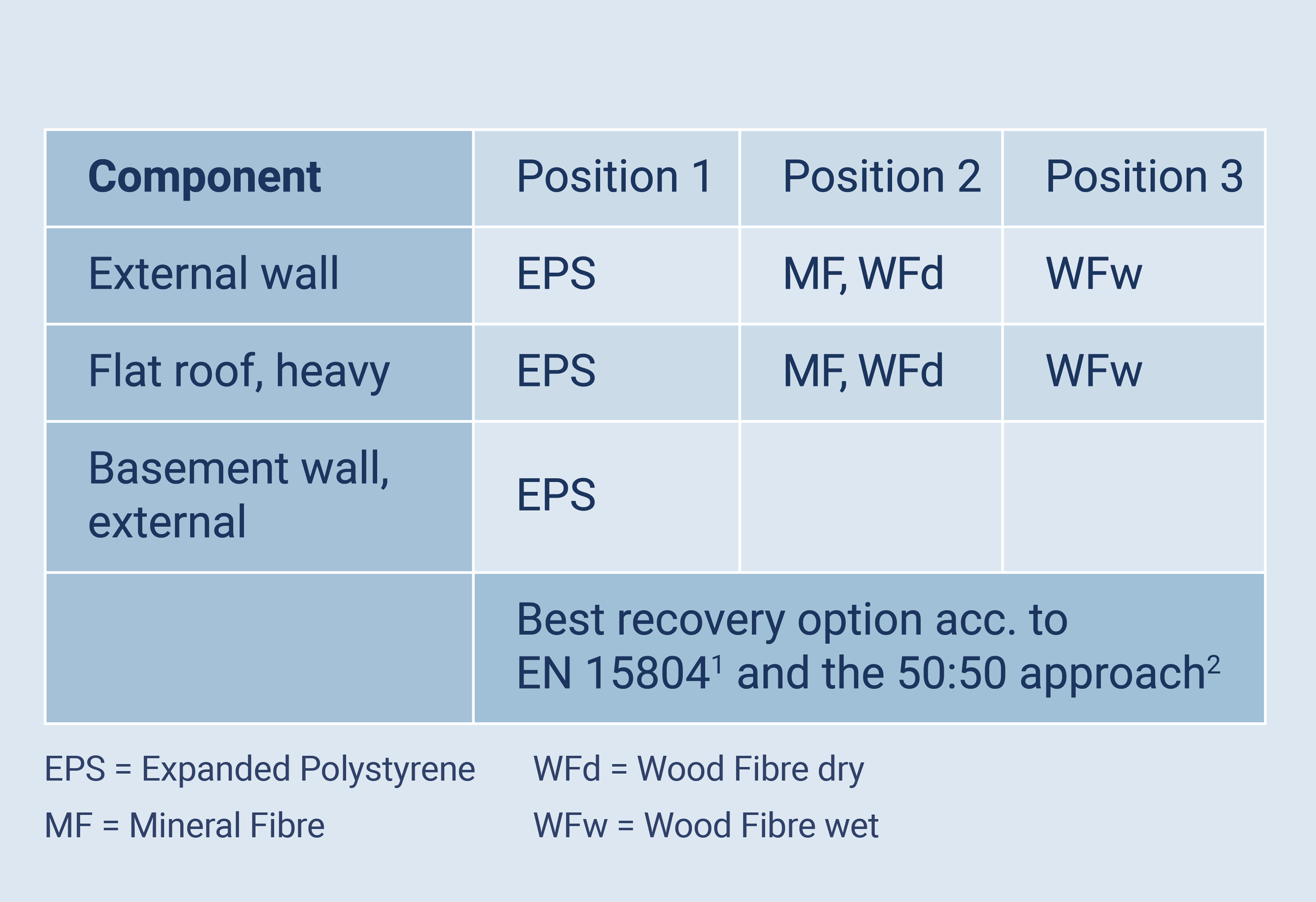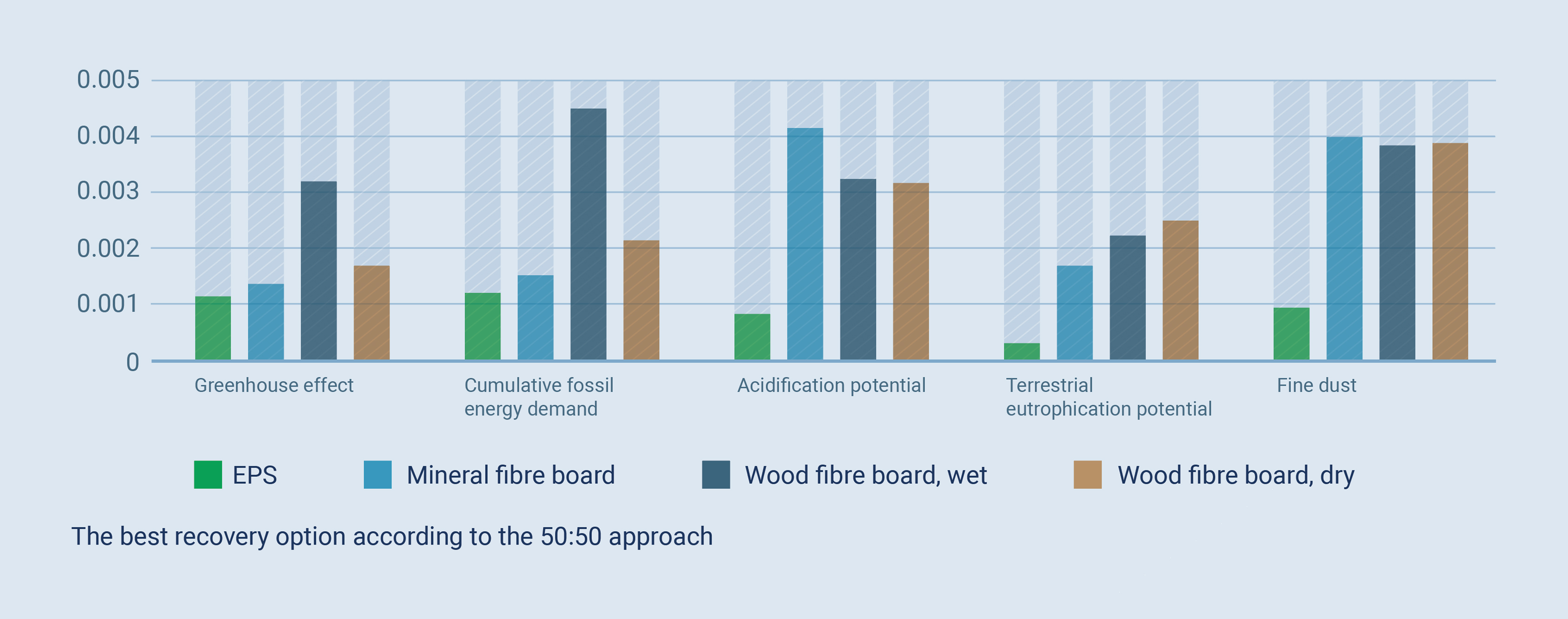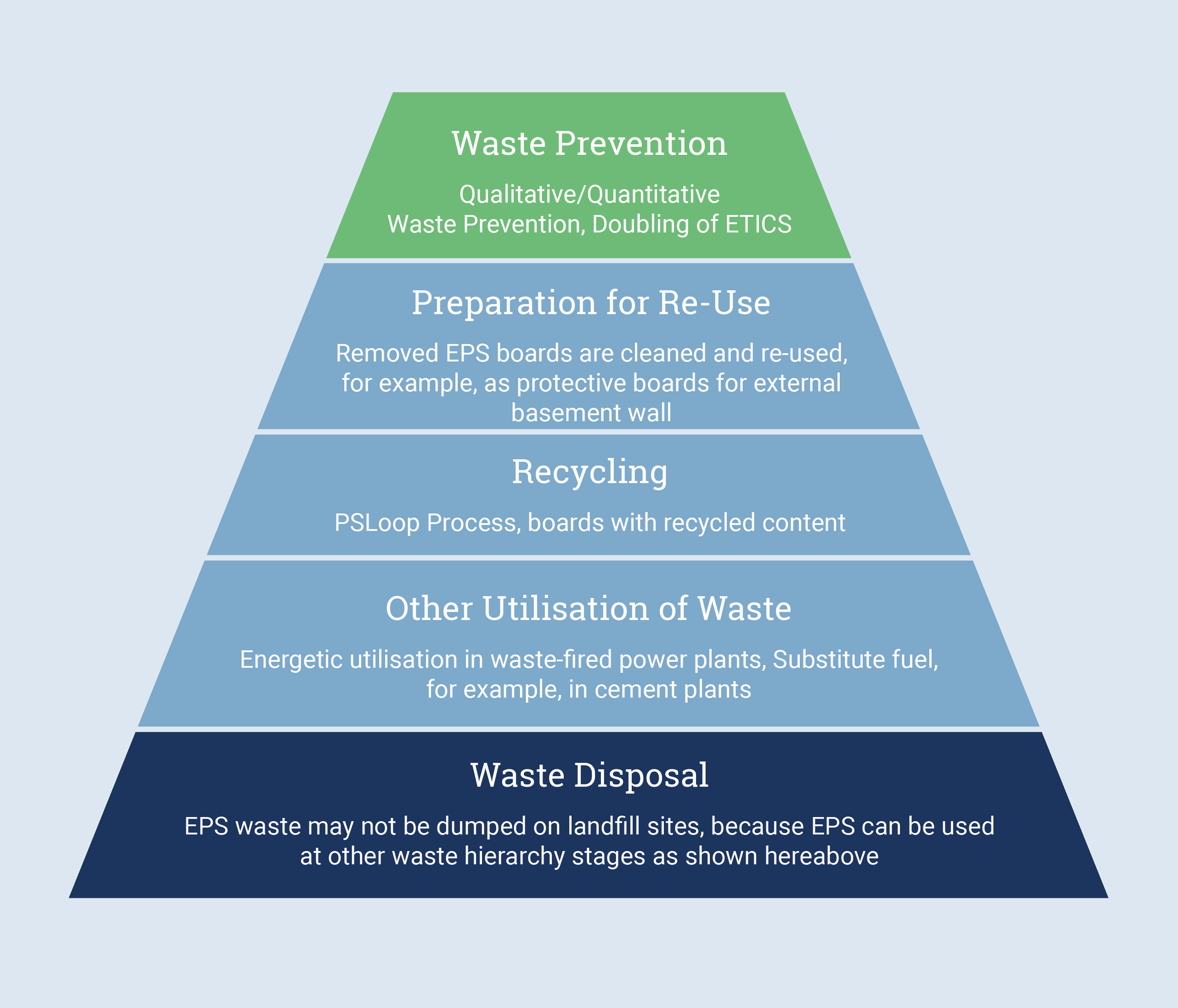EPS is an ecological insulation material
Insulation materials made of Neopor® also convince through their eco-efficiency.
How sustainable are various alternative insulation materials?
This issue has been dealt with by the Institut für Energie- und Umweltforschung (IFEU) and Nateureplus (the International Association for future-oriented building and accommodation). In a study sponsored by the German Federal Foundation for the Environment (Deutsche Bundesstiftung Umwelt) and the regional Ministry for Environment of Baden-Württemberg, insulation materials have been compared throughout their full life cycle (cradle-to-grave), including disposal/recovery. The study dealt with existing recovery opportunities and recycling possibilities foreseeable in the near future. The assessment included insulation materials:
- made from renewable raw materials (cellulose, wood fibrecavity, jute, hemp fibre)
- mineral based insulation materials (mineral fibre, glass wool, mineral foam, foam glass)
- synthetic (EPS-, XPS-, PU-slab)
The study demonstrates that EPS is the ecological leader among insulation board materials:
- Position 1 for the fields of application ETICS (External Thermal Insulation Composite Sytem), Flat Roof, Perimeter, using the optimal material recovery path.
- Position 1 based on the current waste management path, by means of incineration with energy recovery.
- In all other examined fields of application, where no insulation boards are used, EPS has received the second-best rating together with wood fibre insulation and/or cellulose cavity insulation.
More about Neopor® applications
Results obtained for selected insulation boards in detail:
The study defines the energetic utilisation in waste-fired power plants as status quo of EPS, and the use of recycled EPS granulate for new products, reintegration into the production cycle, as the best recovery option.
In a further step, the environmental impacts of various components have been identified. For this purpose, insulating materials have been compared with each other for the following environmental impact categories: greenhouse effect, cumulative fossil energy demand, acidification potential, terrestrial eutrophication potential and emission of particulate matter (PM2,5). The example of the external wall demonstrates: Compared with other insulation materials, EPS shows very low values in every environmental impact category.
More on CO2 savings through Neopor® insluation boards on the example of the Brunckviertel Ludwigshafen
Average figures per inhabitant (EDW) per year and 1 m2 of insulation material based on the example of the external wall

Among other things, the study concludes:
| "Those components, where only insulation boards can be used, EPS comes out as the most favourable solution, followed by other above mentioned insulation materials in board shape. This is based on the prerequisite that EPS is recycled in a manner that the quantity of EPS beads can be reduced in subsequent applications, and that EPS can be used in this building element." |
Study methodology:
The requirements in terms of thermal insulation in various components, such as facades and roofs, were specified. This allowed to identify the masses required for the various insulation materials. The masses represented the key parameters for the ecological comparison. To make the various insulation materials comparable in terms of their equal benefits, their fields of application and their raw material proved to be relevant. In addition, fire behaviour, physical life, noise suppression and mechanical properties were included into the assessment.
The production data of the insulation materials for the purpose of ecological assessment were taken from several databases. In parallel to that, existing and possible disposal channels of the insulation materials, and also associated expense and benefits have been determined. This represented the basis for the Life Cycle Assessment (LCA) reports drawn up for the study. In the study, EPS insulation materials of heat conductivity group (WLG) 035 (white) have been assessed, whereas standard EPS boards of WLG 032 (grey) remained out of consideration.
Taking into account the production and recovery burdens, in the next step a comparison was made, involving the four following cases:
- Disposal in status quo:
- according to the European standard EN 15804 for Environmental Product Declarations.
- according to 50:50 approach.
- Best recovery option
- according to the European standard EN 15804 for Environmental Product Declarations
- according to 50:50 approach.
You will find the complete study in German language here.
Waste management hierarchy according to German Circular Economy and Waste Regulation for the example of EPS
Through the Five-Stage Waste Hierarchy, the priorities are determined for measures for waste prevention, as well as preparing for re-use, recycling, other (especially energetic) utilisation, and disposal of waste.
EPS cut-off pieces that are delivered back to the manufacturers are frequently not considered as waste and are therefore disregarded in the waste hierarchy. Such pieces and remnants will be subjected to treatment, for example, for the production of new EPS insulation materials and light weight concrete.
More about the life cycle of Neopor®
About IFEU
IFEU is an independent research institute that deals with major environmental and sustainability issues. More than 40 years of experience make IFEU one of the most important research institutes in Germany. Among others, the institute advises the German Federal Ministry for the Environment, Nature Conservation and Nuclear Safety, and also the German Federal Environmental Agency.
About Natureplus e.V.
This association has been existing since 2001 and deals with the promotion of sustainable construction and housing. Members include, among others, environmental organisations, institutes and representatives of industry and commerce. The association is also the initiator of the identically named environmental certification.


